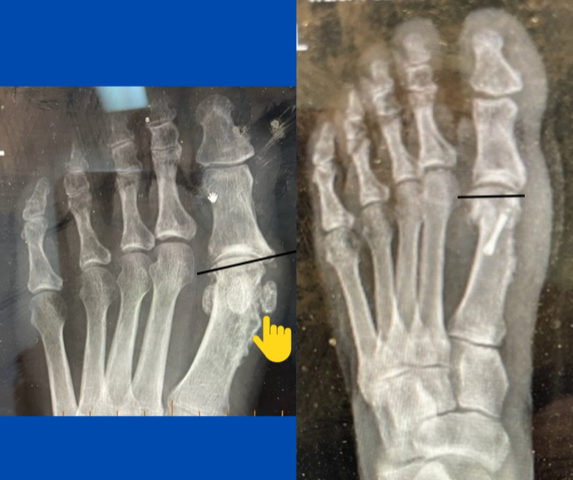
The images may appear relatively straightforward on initial inspection. However, some crucial points can allow revisional, or any, bunion surgery to have a greater chance of long-term success.
The image is of a patient who presented with a history of failed bunion surgery. The surgery would never be successful, as the main underlying problem with a bunion, the intermetatarsal angle (IM), was not addressed.
A large ossicle sitting on the medial aspect of the joint had also been left. The yellow indicator appears to be an extra sesamoid; however, it was an ossicle the previous surgeon had created and left at the site.
I have also added a black line to show the PASA angle, which must be addressed during the surgery.
The new procedure involved removing the ossicle, releasing the adductor hallucis tendon and lateral sesamoid ligament, and Austin/chevron osteotomy, with a subtle modification of the dorsal arm of the cut. A tiny extra sliver of bone is removed medially to allow me to rotate the head of the metatarsal simultaneously, as I shift this laterally to reduce the IM angle and correct the deformity. This was fixated with a single 2.5 mm canulated screw.
The medial capsule was then repaired to take up the slack to ensure a stable rectus joint. Note the correction of the PASA, marked with a black line on the pre- and post-op images.
If you have any specific questions or would like to discuss similar cases, feel free to contact me.
Also read:
The problems with keyhole bunion surgery
Biomechanics of a pathology (bunions and pes planus)
Improvements in bunion surgery
Bunion surgery: Modern procedures for quick recuperation and long-term results
(This content is intended for healthcare professionals only)
